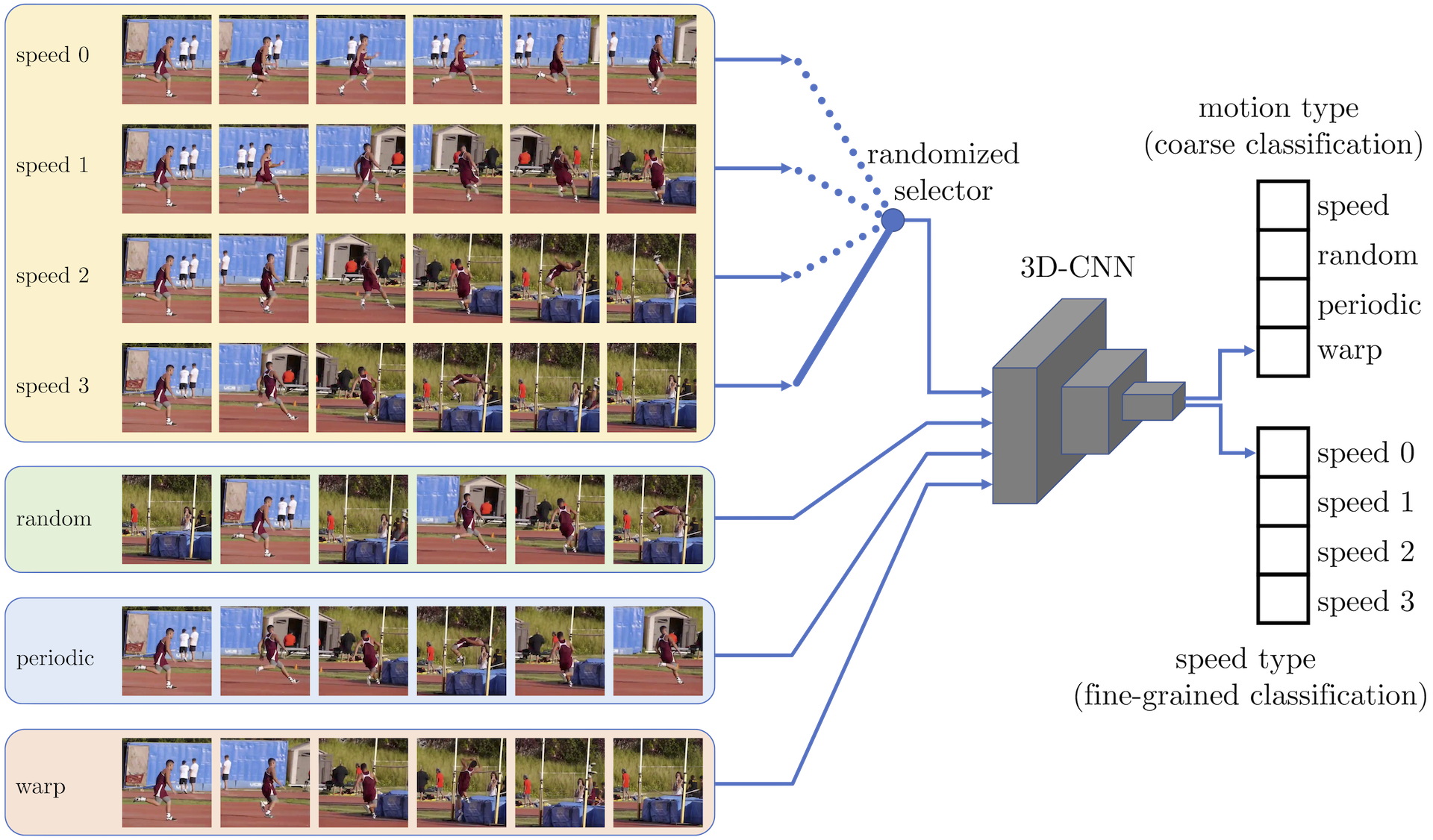Video Representation Learning by Recognizing Temporal Transformations [Project Page]
Simon Jenni, Givi Meishvili, and Paolo Favaro.
In ECCV, 2020.
This repository contains code for self-supervised pre-training on UCF101 and supervised transfer learning on the UCF101 and HMDB51 action recognition benchmarks.
The code is based on Python 3.7 and tensorflow 1.15.
- Dowload UCF101 and HMDB51.
- Set the paths to the data and log directories in constants.py.
- Run init_datasets.py to convert the UCF101 and HMDB datasets to the TFRecord format:
python init_datasets.py
- To train and evaluate a model using the C3D architecture, execute train_test_C3D.py. An example usage could look like this:
python train_test_C3D.py --tag='test' --num_gpus=2


